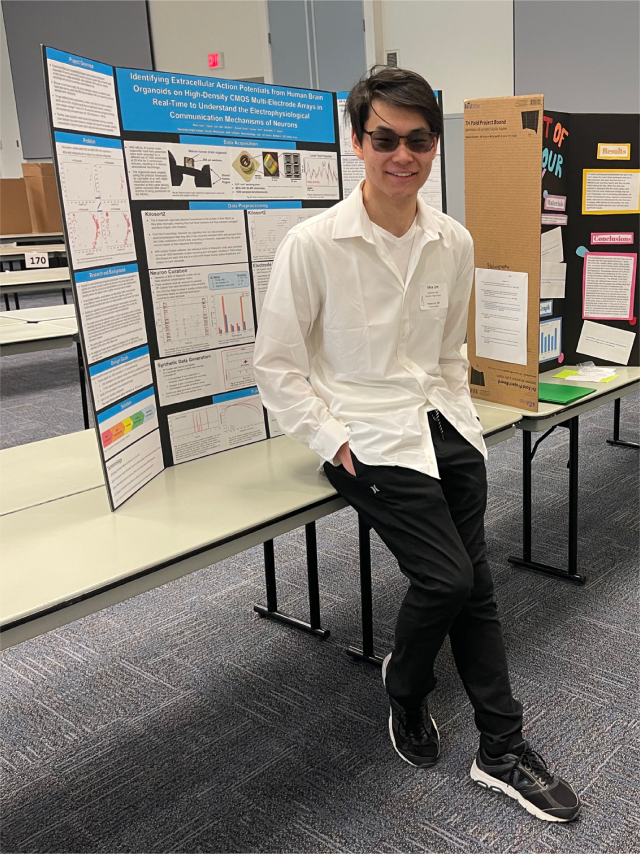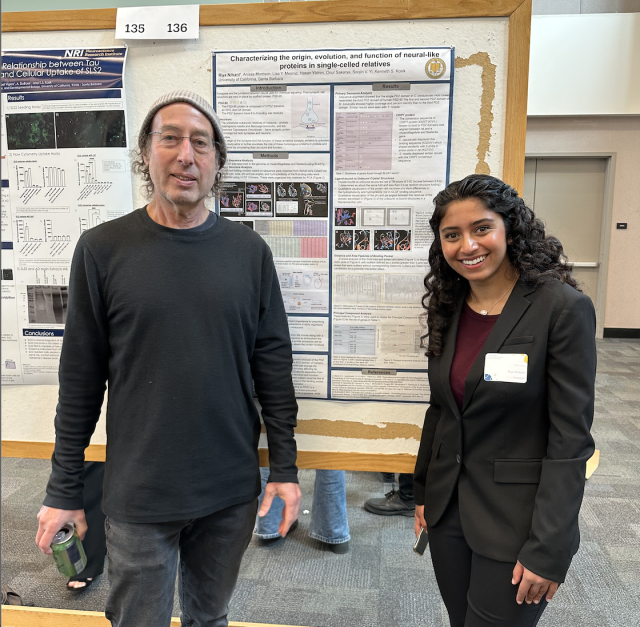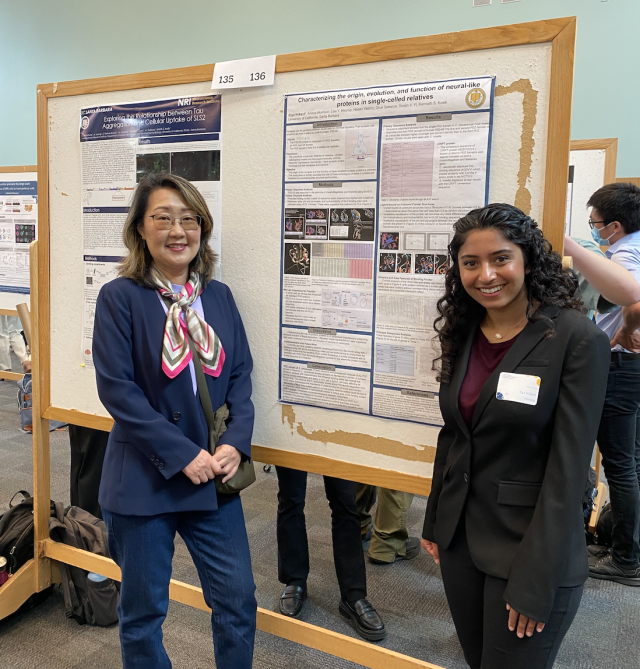Students Reap Awards

Max Lim received the National BioGENEius Award for Southern California, First Place Award at the Ventura County Science Fair in Human Biology, and Second Place Award at the California Science and Engineering Fair in Mammalian Biology
The title of Max's poster was "Identifying Extracellular Action Potentials from Human Brain Organoids on High-Density CMOS Multi-Electrode Arrays in Real-Time to Understand the Electrophysiological Communication Mechanisms of Neurons" in which he described the waveform-shape based deep learning model created to identify extracellular action potentials from human brain organoids embedded in local field potential noise within milliseconds. This model will improve the currently unreliable spike sorter methods and will enable previously impossible closed feedback loop experiments. Max is extremely grateful for Tjitse van der Molen's mentorship.

Riya Nilkant was a third place finalist at the Undergraduate Research and Creative Activities (URCA) Slam competition where she presented her research on the origin of the synapse. She received a grant from UCSB earlier this year, and is studying synaptic gene homologs in protista and filasterea.
Through analysis of 9 conserved binding sites of individual PDZ domains in synaptic scaffold protein PSD-95, Riya has quantified the binding pocket in choanoflagellates, filasterea, and metazoans to better elucidate their structure and its implications on function. Riya presented her poster titled "Characterizing the origin, evolution, and function of neural-like proteins in single-celled relatives" where she analyzed predicted folding structures for the distances and areas between binding residues, as well as the hydrophobicity index and phi and psi angles of these binding sites. She was invited to present at the URCA conference and her research is published on the URCA Digital Colloquium. Her current experiment focuses on transfecting a neural cell with the PDZ3 domain of choanoflagellate M. brevicollis to study its binding to synaptic proteins.
She is extremely grateful to Principal Investigators Dr. Kenneth Kosik and Dr. Soojin Yi for their mentorship.
